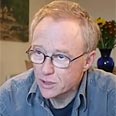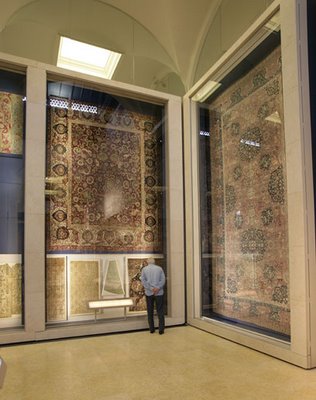
The Norwegian police are reporting that Munch's paintings - "Scream" and "Madonna" , stolen from the Munch Museum in Oslo in 2004, have been recovered. Munch's "Scream" and his numerous variations in different media have inspired a host of references, homages and parodies. The Munch Museum, before the theft, hosted an exhibition of contemporary works influenced by Munch's proto-existential painting.
 Gilbert & George
Gilbert & George "Street"
121 x 100cm photomontage 1983
The museum provides a concise description of "Scream's" genesis:
"In his writings, Munch connects "Scream" (1893) with a specific event - a walk with some friends from a vantage point high up on Ekeberg at sunset. Munch paints the subjective experience of "the scream in nature" as an expression of universal angst rooted in existential uncertainty. Mankind is on the threshold of a new and frightening century, abandoned by God, whom Nietzsche had declared dead in 1872. Through its deeply expressive power this picture has attained the status of icon in the history of art. The universal angst of the age and the personal angst of the individual here reach their apogee. But "Scream" also expresses the universal struggles in life and what it is to be human."
 Edvard Munch
Edvard Munch"Scream"
84 x 67cm oil, tempera and pastel on cardboard 1893
The Munch Museum provides a history
of the newly recovered paintings on it's website:
 Edvard Munch
Edvard Munch"Madonna"
oil on canvas 1894
"Scream" and "Madonna" in the Munch Museum collection were in the artist's possession when he died in 1944, and part of his bequest to the City of Oslo.
"Scream" in the Munch Museum is one of two painted versions of the image. The other is to be found in the National Gallery, Oslo. The National Gallery version is signed and dated 1893, and many scholars believe this to be the first one. Both versions are painted on cardboard, and Munch has also sketched the image on the reverse side of the National Gallery version. "Scream" - one of the two versions - was first exhibited at Unter den Linden in Berlin in December 1893. In 1895 an important version of the image was produced as a lithograph. There exist two pastels of the image, one belonging to the Munch Museum, the other privately owned. There are also a few sketches related to "Scream" on a sheet of paper in the Munch Museum collection
A text from Munch's diary in 1892 relates to "Scream":
I was walking along a path with two friends
the sun was setting
I felt a breath of melancholy
Suddenly the sky turned blood-red
I stopped and leant against the railing,
deathly tired
looking out across flaming clouds that hung
like - blood and a sword over the
deep blue fjord and town
My friends walked on -
I stood there trembling with anxiety
And I felt a great, infinite scream pass
through nature.
The Munch Museum's "Madonna" is painted on canvas. There are four additional painted versions of the image. The National Gallery Oslo and the Hamburger Kunsthalle each have one, while two are in private collections. The Munch Museum "Madonna" is dated 1893-94. In 1895 Munch made a lithographic version of "Madonna", with a decorative frame depicting spermatozoa and an embryo. Several poetic texts related to Madonna underscore the intimate relationship between love and death:
...Now life is shaking hands with death
The chain that binds together the thousand generations
of dead with the thousand generations yet to be born
has been tied...
"In "Scream", humanity's desperation and angst is emphasised by the strikingly harsh colours and the restless, agitated lines of the background. The characteristic wavy brushstrokes that Munch introduces in the 1890s are related to the ornamental painting of symbolism and art nouveau. Yet by contrast with their carefully calculated decorative effects, Munch's brushwork is spontaneous and unpolished, becoming a direct physical expression of the artist's inner turmoil. At the same time, this dynamic approach is an important part of Munch's portrayal of himself as the ostracised, mentally unstable genius."
 Child's painting made after the theft of "Scream" and "Madonna" in 2004.
Child's painting made after the theft of "Scream" and "Madonna" in 2004.For those with children in Norway the museum holds an Edvard Munch Children's Workshop for kids, aged 5 to 8, once a month and on special occasions. The students learn about Edvard Munch as an artist, his life story and spend time looking at and asking questions about the Munch paintings in the museum. Afterwards they work on their own paintings in the children’s workshop. The workshops are held in Norwegian.
I wonder if the Norwegian artist Laila Carlsen was able to take part as a child?











